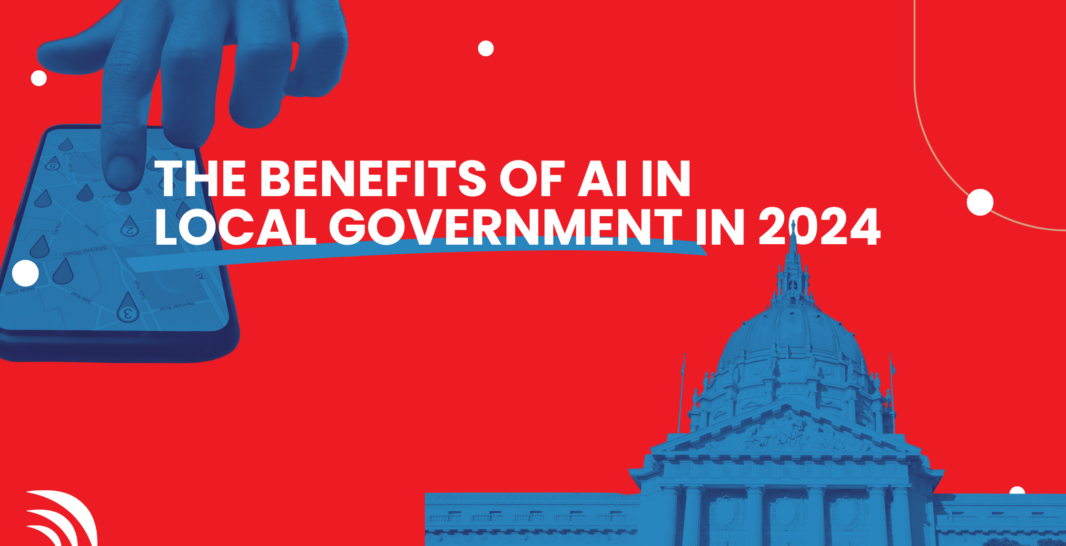A Tale of Two Cities
Imagine two totally hypoethetical neighboring cities, both facing similar challenges with citizen engagement, operational inefficiencies, and budgetary constraints. City A decided to embrace the power of AI, while City B remained hesitant, clinging to traditional methods. Let’s explore how their paths diverged.
City A: A Trailblazer in AI Adoption
In 2024, City A took a bold step by integrating AI solutions into its operations. They partnered with VIcom, a leading AI integration specialist, to streamline processes and enhance citizen experiences.
One of the first initiatives was the implementation of a conversational AI assistant, “CityBuddy,” accessible through the city’s website, mobile app, and voice channels. CityBuddy quickly became a hit, providing 24/7 personalized support to citizens, handling everything from reporting potholes to answering questions about local regulations.
“I was skeptical at first, but CityBuddy has been a game-changer,” exclaims Sarah, a long-time *hypothetical resident. “I can get my questions answered instantly, without having to navigate through complicated phone menus or wait for office hours.”
Behind the scenes, AI-powered automation streamlined countless processes, from managing permit applications to scheduling inspections. This freed up city employees to focus on more complex tasks, improving overall efficiency and response times.
But the benefits didn’t stop there. By analyzing citizen feedback and service usage data, City A could make data-driven decisions, optimizing resource allocation and proactively addressing potential issues before they escalated.
“AI has given us a competitive edge,” remarked the city’s Chief Innovation Officer. “We’re delivering better services, saving taxpayer money, and building trust with our citizens through increased transparency and accountability.”
City B: Stuck in the Past
Meanwhile, City B remained skeptical of AI, citing concerns about costs, technical complexity, and potential job losses. As a result, they continued to rely on outdated processes and manual labor, struggling to keep up with citizen demands and operational inefficiencies.
“It’s frustrating,” lamented a city employee. “We’re constantly playing catch-up, and our citizens are growing impatient with the long wait times and lack of responsiveness.”
As City A reaped the rewards of AI adoption, City B found itself falling behind, losing talented employees to more innovative municipalities and facing mounting budgetary pressures.
The Choice is Clear: Embrace AI or Risk Falling Behind
The contrasting stories of City A and City B illustrate the stark reality facing local governments in 2024: embrace AI or risk falling behind. The benefits of AI adoption are clear – improved citizen engagement, enhanced operational efficiency, data-driven decision-making, increased transparency, and significant cost savings.
Early adopters like City A are already reaping these rewards, positioning themselves as leaders in service delivery and innovation. They are attracting top talent, building trust with their citizens, and future-proofing their operations for the challenges of tomorrow.
Don’t let your city become the next City B. Partner with VIcom today and embark on your AI transformation journey. Our team of experts will guide you through every step, from identifying the right AI solutions to seamless integration and ongoing support.
The future of local government is here, and it’s powered by AI. The choice is yours: embrace it or risk being left behind.
That was a fun exercise of imagination, but here’s the truth.
In 2024, Artificial Intelligence (AI) is proving to be a transformative force in local government operations. By leveraging AI, particularly conversational AI, local governments can enhance efficiency, improve citizen engagement, and streamline service delivery. Here’s how local governments can benefit from adopting AI solutions.
Improving Citizen Engagement
24/7 Accessibility and Personalized Service
Citizens today expect the same level of service from their local governments as they do from businesses. Conversational AI provides 24/7 accessibility, ensuring that citizens can get the information they need at any time. AI-powered chatbots and virtual assistants can handle a wide range of inquiries, from service requests to information about local regulations, providing quick and accurate responses. Additionally, AI can personalize interactions based on a citizen’s previous interactions, improving overall satisfaction.
Boosting Operational Efficiency
Automating Repetitive Tasks
One of the most significant benefits of AI in local government is its ability to automate routine and repetitive tasks. Processes such as answering frequently asked questions, processing forms, and managing appointments can be handled efficiently by AI, freeing up government employees to focus on more complex tasks that require human intervention.
Streamlining Processes
AI can help streamline various processes within local government by quickly analyzing large volumes of data and identifying patterns. This capability can lead to more informed decision-making and efficient implementation of policies.
Enhancing Service Delivery
Faster Response Times
AI reduces response times by providing immediate assistance to citizens through chatbots and virtual assistants. This not only improves citizen satisfaction but also reduces the workload on government employees.
Multichannel Support
Conversational AI supports multiple communication channels, including websites, mobile apps, social media, and phone systems. This multichannel approach ensures that citizens can access services through their preferred platforms, making it more convenient for them to interact with their local government.
Enabling Data-Driven Decisions
Analyzing Citizen Feedback
AI tools can analyze feedback from various sources, such as surveys, social media, and direct interactions, to gauge public sentiment and identify areas for improvement. This data-driven approach enables local governments to make more informed decisions that better align with citizen needs.
Predictive Analytics
AI-powered predictive analytics can forecast trends and potential issues, allowing local governments to proactively address challenges. For example, predictive models can help with resource allocation, emergency management, and infrastructure planning.
Increasing Transparency and Accountability
Real-Time Reporting
AI enables real-time reporting and tracking of government activities and services. This transparency helps build trust with citizens by keeping them informed about the status of their requests and the progress of various projects.
Performance Monitoring
AI can monitor the performance of government services and staff, ensuring accountability and continuous improvement. This helps identify inefficiencies and areas where additional training or resources may be needed.
Achieving Cost Savings
Reducing Operational Costs
By automating routine tasks and streamlining processes, AI reduces the need for extensive human resources, leading to significant cost savings. These savings can be redirected to other critical areas, such as infrastructure and community programs.
Optimizing Resource Allocation
AI can optimize resource allocation by analyzing data on service usage and demand patterns. This ensures that resources are deployed where they are most needed, improving overall service delivery efficiency.
Implementing AI in Local Government
Start Small and Identify Trends
Many local governments are hesitant to adopt AI due to the complexity of their services and processes. The key is to start small by identifying repeat requests and repetitive processes that can be automated. For example, common tasks like managing bin collections, parking fines, or council tax inquiries can be ideal starting points.
Understand Current Processes
Before implementing AI, it’s important to understand how citizens currently engage with the processes you wish to automate. Ensuring a seamless transition that doesn’t disrupt existing workflows is crucial. Automation should enhance the process, not create additional steps or complications.
Deliver a Seamless Customer Experience
AI-driven automation works best when integrated with a single platform for all communications. This platform should integrate with existing CRM and other business systems to share information and deliver a seamless customer experience. Modernizing old systems to incorporate AI can result in better customer experiences and operational efficiencies.
Why Choose VIcom for AI Integration in Local Government?
VIcom partners with the leaders in this communication space. Companies like Zoom, RingCentral, 8×8, Nextiva and more are incorporating AI in ways that organizations across all industries are using to communicate internally and externally in a more effective and streamlined way.
We deliver customized solutions that enhance citizen engagement, operational efficiency, and service delivery. Our comprehensive approach includes consulting, design, implementation, and support, ensuring seamless integration and long-term success.
Schedule a Free Consultation Today
Ready to transform your local government services with AI? Fill out the form below to schedule a free consultation with our experts. Let VIcom help you integrate and optimize AI solutions for a seamless and productive experience.

